What a gem of an article and a person. Kudos and God bless David Lynch.
After listening to his NPR interview a few months back, I am going to attempt to dig into TM more and get in deeper in touch with the inside.

“First, I have to say that I love stereo.” That’s David Lynch — the inimitable audiovisual pioneer who passed away a week ago on January 15, 2025, at age 78 — during an interview that I was beyond honored to conduct with him by phone over a decade ago on August 22, 2011, at 2:40 p.m. EST. He was in the Los Angeles area at his perfectly named Asymmetrical Studio in Hollywood, and I was perched at my cramped, rectangularly shaped office’s desk ten floors up in the sky in the heart of Midtown Manhattan, in a building smack dab in the middle of the even-numbered west side of Park Avenue between 32nd and 33rd Streets. The interview was recorded on a Panasonic RT Series MC60 microcassette ensconced in a silver-hued Panasonic RN Series microcassette recorder. (I list all these specifics regarding time, place, and the objects involved because, well, it just seems like a Lynchian kind of thing to do.)
Since his passing, much has been written about Lynch’s unquestionably unique vision, style, and verve as a filmmaker who created iconic, genre- and generation-defining movies and TV shows alike, but not nearly enough has been penned about his learned ear — and, yes, that is technically a Blue Velvet reference — for Lynch was nothing if not an aural auteur not only in regard to the music he chose to accompany and buttress his film and TV work, but also about the music he made himself. And, the relative beauty of it all is, much of that music is available on vinyl (which I’ll get more into in just a bit).
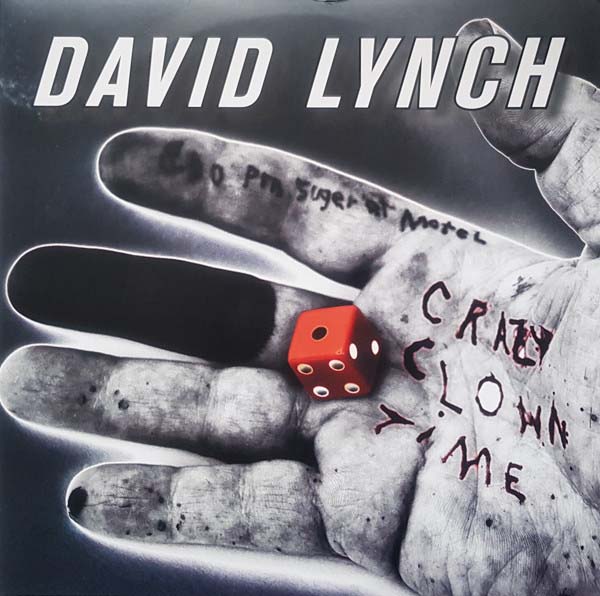
The occasion of our interview was to discuss Lynch’s first full solo album, Crazy Clown Time, which was released as a 2LP set in Europe in 2011 by Sunday Best Recordings (SBESTLP46) and concurrently licensed/released in the U.S. by [PIAS] America (PIASA50LP). The Sunday Best edition is said to have been cut by Sam John at Precise Mastering, while the U.S. edition’s lacquers were cut by Alex De Turk. The album was engineered by Lynch’s main latter-era musical collaborator Dean Hurley, mixed by both Hurley and Lynch, and mastered by Brian Lucey.
That afternoon chat was initially intended for the print edition of our sister site Sound & Vision, and it did indeed appear in their 88-page December 2011 edition under the auspicious title of “David Lynch’s Insane Clown Posse” as accompanied by the companion subhead, “Secrets of a newborn guitar hero, and other crazy music tales from the iconic director.” (The story ran across pages 48-51, if you must know.) However, this interview never appeared online for any length of time (if it even ever did, for that matter) — until now, that is, along with a damn good helping of all this newly added introductory introspection and exposition.
In the original story’s opening, I mentioned to Lynch that I felt Crazy Clown Time, on which he sings lead vocals and plays a mean guitar, seemed like the soundtrack to a movie both of us had only seen in our respective heads. His response: “Good insight!” Those first two words, mind you, were blurted out in that patented, heightened, exclamatory wonderment style/manner of his. Then Lynch continued, “It’s interesting to think about that. In other words, my next film could theoretically have these songs in them — but maybe not.” Spoken like the true multi-pronged if/then/else progenitor that he was.
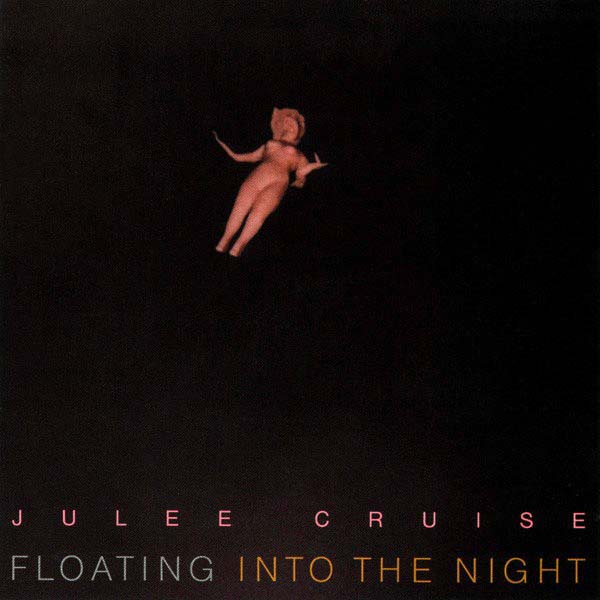
Lynch also noted, “To me, songs have to have a story,” and that mantra also fits in with the impetus behind the music he created. Besides releasing music under his own name, Lynch also had a knack for being the muse-cum-conduit for a number of collaborators, one of them being Julee Cruise, the Iowa-born chanteuse who breathed literal life into a number of songs featured in his groundbreaking 1990-91 TV series for ABC, Twin Peaks. Actually, Cruise’s debut LP, September 1989’s Floating Into the Night (Warner Bros. 9 25859-1, later reissued in multi-color vinyl options by Sacred Bones in 2023 as SBR-3041) presaged that show, and was also her signature full-album mindmeld with Lynch and composer Angelo Badalamenti. I’m still, well, haunted by “Floating” (Side 1, Track 1), which marries Cruise’s inherent vulnerability with the grandscale majesty of the show’s main theme behind her (and I dare you to be unaffected by how she takes her time between each word to put forth the lines, “Don’t let yourself be hurt this time” and “When I saw your face”). The more hopeful “Rockin’ Back Inside My Heart” (Side 1, Track 4) is akin to a lost ’50s pre-doom ballad, albeit with the briefest sax-squonk break embedded in the middle of it, while the regal hymnal “Mysteries of Love” (Side 1, Track 5) is a longer version of a track that first appeared on the 1986 Badalamenti/Lynch-overseen Blue Velvet (Original Motion Picture Soundtrack) LP (Varese Sarabande STV 81292). At the end of her Night album lies the linchpin — or rather, the Lynchpin — track, “The World Spins” (Side 2, Track 5), a song Cruise reprised in a pivotal scene during the first hour of the two-hour finale of Lynch’s 2017 Twin Peaks: The Return revival on Showtime.

I met with Cruise at a classic New York City nook/café called Big Cup on 8th Avenue between 21st and 22nd Streets at noon sharp on November 8, 2002. (Did we have some damn good coffee while we were there? Well, I recall at least one of us did.) She and I had both attended Drake University in Des Moines, Iowa, albeit at different times (she in the ’70s; me in the ’80s), but it served as a Midwestern-sensibility bonding point. In addition to admitting to listening to “chill-out compilations” in her car (a red 2002 Jeep Grand Cherokee), how “hearing Dave Brubeck changed my life,” and expressing her belief that “music should have irony in it,” Cruise remained grateful for her time working with her “big brother,” Lynch. “I played my instrument — my voice — and he gave me the words to wrap it around,” she told me. “Floating Into the Night is a beautiful album, and I love him, and Angelo [Badalamenti] for it. I didn’t want to show those beautiful or romantic sides of me — that intimate, quiet beauty — but I had to, so that we could get the sound just right.”
Cruise’s solo material on vinyl will literally take you into the clouds, and you can find the balance of it on either the original Warner Bros. LPs or more recent Sacred Bones reissues. Her 2018 Three Demos 45rpm EP (Sacred Bones SBR-3027) shows even more of the collective groundwork being laid. (Cruise sadly passed away in June 2022 at age 65, and Badalamenti passed away in December 2022, at age 85.)
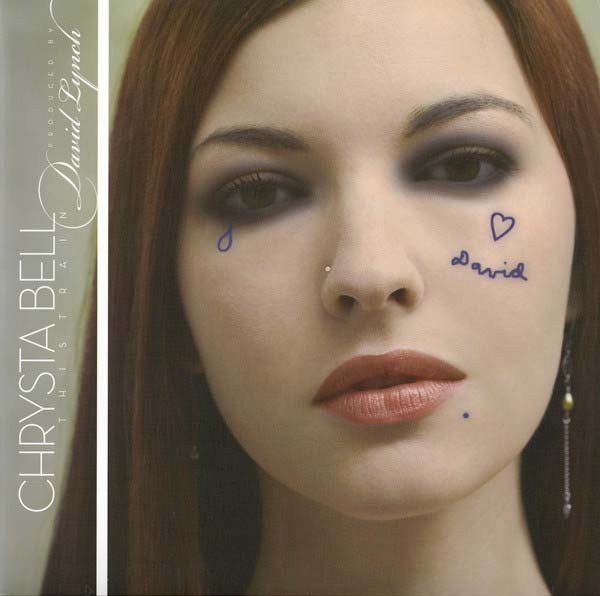
I’ve also spoken with one of Lynch’s latter-day collaborators, ethereal-wave vocalist Chrysta Bell, whom Lynch was both behind the boards for and occasional co-lyricist with on her September 2011 45rpm 2LP set This Train (La Rose Noire LRN0207). On October 20, 2011, Bell told me, by way of an elaborate conceptual videoclip intended to be an exclusive for the iPad edition of S&V (and in her quite ethereal vocal tone, at that), “ Music and sound are very important to David, and really a large part of his creation process and artistic expression. I think the emphasis he places on giving space and dimension in his music is something he has mastered, and it’s very effective. I like to think, when we were making This Train, that we were creating a soundtrack to a Lynch film that was yet to be made. And it really helped me get into the right space to bring forth the melodies and to help put the pieces together for this music.” Just listen to “I Die” (LP1, Side Two, Track 1), and you’ll immediately get the gist of that statement.
More recently, the dynamic duo — this time credited as chrystalbell & David Lynch — collaborated on August 2024’s Cellophane Memories LP, which was released by Sacred Bones (SBR-344) in various color vinyl options — clear, red, gold nugget, and black smoke marble. The eerily percussive “The Answers to the Questions” (Side B, Track 1), with Bell’s vocals floating in and out of the ether like the dark clouds and dark winds she references in the lyrics (penned by Lynch, of course), gives you an exact taste of what to expect on the full album.
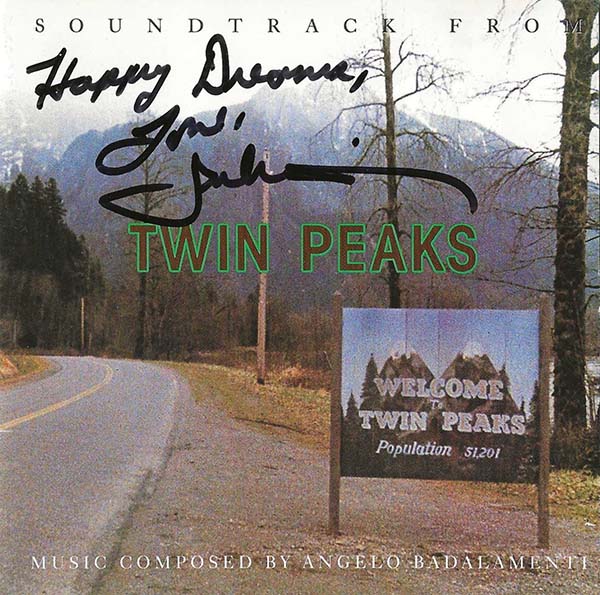
There is a marvelous diversity to Lynch’s music on vinyl — though you always know it’s him. The original Soundtrack From Twin Peaks LP continues to reward repeat listens, and I enjoyed cueing up my limited-edition green vinyl edition that was reissued on Warner Records in January 2020 (603497848904), albeit with the word Music in place of Soundtrack atop the front cover, though the black LP labels themselves stayed true to the original title. Dig the slow-burning tension on “Audrey’s Dance” (Side One, Track 3), featuring Badalamenti’s shimmery keys, crisp fingersnaps, Grady Tate’s taut snare and drum-brush shuffles, and Albert Regni’s long-held horns notes and bleats — plus, immersify yourself in “Dance of the Dream Man,” with Regni’s alluring sax solo, seductive walk-with-me bass line, and Badalamenti’s thematic-recall synth stabs (Side Two, Track 4). Vocalist Cruise is in full ethereal chanteuse mode on “The Nightingale” (Side Two, Track 4), her more delicate reading of “Into the Night” (Side 2, Track 2), and, of course, “Falling” (Side 2, Track 6), all of which can be found on her aforementioned Floating LP as well.
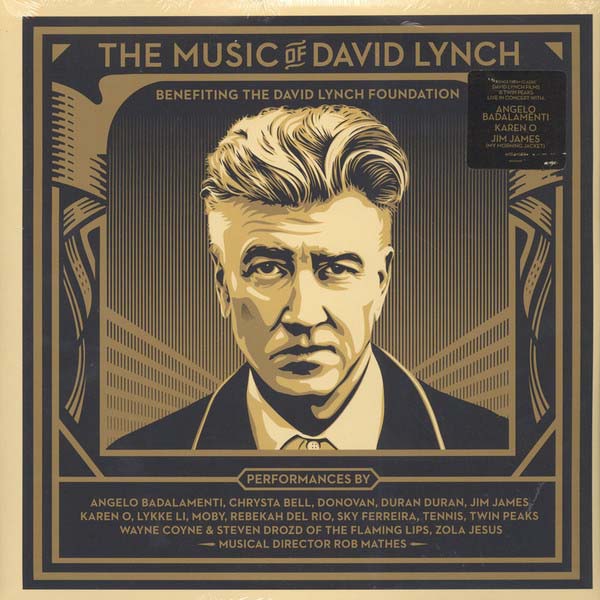
Additional Lynch material abounds on vinyl, such as the 2008 2LP collab with Badalamenti, David Lynch’s Mulholland Dr. (Music From the Motion Picture) (Milan DOT0-36370); July 2013’s 2LP solo offering The Big Dream, which includes a one-sided 45 for “I’m Waiting Here” (Sunday Best SBESTLP61); and the marvelous April 2016 2LP compilation The Music of David Lynch: Benefiting The David Lynch Foundation (Communion 2547777409), which features artists like Jim James, Karen O, and Moby both covering and paying homage to the man’s meditative words and deeds. As long as you have an open heart, open mind, and open ears, you’ll find plenty of joy and wonderment within the grooves of each of these Lynchian releases.
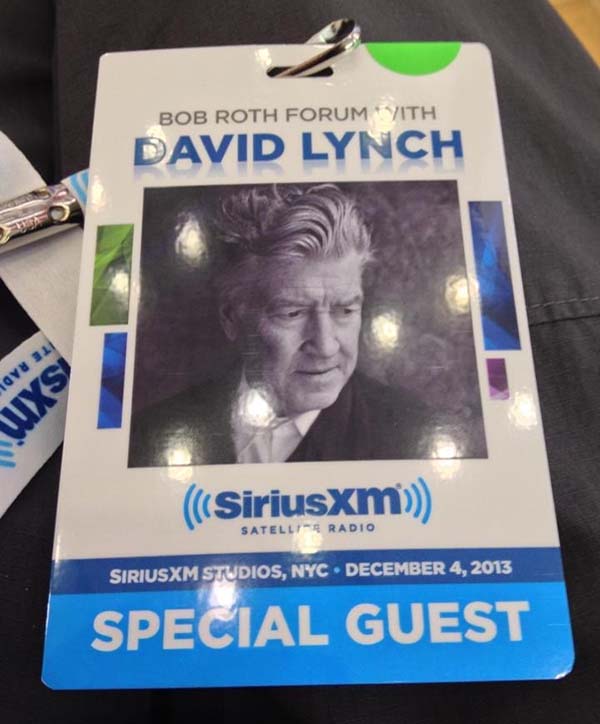
One final sidenote before the full Q&A portion commences (all of which, incidentally, I had to type back in from scratch since I couldn’t locate my original Word file, as it’s probably on a hard disk I haven’t yet found to transfer to my Dropbox). I did get to meet Lynch in person after a SiriusXM subscriber exclusive Town Hall at their Midtown NYC Studios in the McGraw-Hill Building on the Avenue of the Americas (between 48th and 49th Streets) at 11 a.m. on December 4, 2013. Each attendee had the option to write a question for Lynch to answer on a provided card. Time was tight, so not that many Qs were able to be posited following the Q&A. Naturally, my unasked Q essentially boiled down to, “Is vinyl the best format for your music?” I’ve since kept that blue-framed, handwritten Q card in my master files (of course).
As was standard procedure at SiriusXM subscriber Town Halls of this nature (they were still including XM as part of their merged satellite-radio company name back then), each attendee also got to have their picture taken with Lynch afterward, a standup setup that took place in front of a SiriusXM-bannered wall near the elevator bank. With me, I had the Crazy Clown Time LP and an original Twin Peaks Season 1 DVD box set, and when Lynch saw them as I reminded him of our interview, he lit up in that way of his. He held the LP, and I held the box set. The photo was duly snapped, we said a quick goodbye, and off I went.
Typically, instructions would then be sent by the SiriusXM events contact via email with details about when and where to download a copy of your photo — but they never arrived. I repeatedly reached out to that SiriusXM contact to no avail (and I even queried another marketing contact I knew there), but to no avail. I don’t think any of my fellow attendees had any luck getting their photos either, which, I suppose is a Lynchian kind of wrench in and of itself — a phantom photo opp forever floating somewhere in the cloud never to be retrieved, and only accessible in the mind’s eye.
At any rate, Lynch’s artistic legacy is a rich bounty for both ears and eyes alike — and hearts and souls too. In the following interview, Lynch and I discuss the first singles he ever bought, the differences between “objective” and “subjective” science when it comes to album sequencing, and the specific way his hard-of-hearing Twin Peaks character Gordon Cole would want to listen to music. All I need is a simple lift / Such a sweet and precious gift. . .
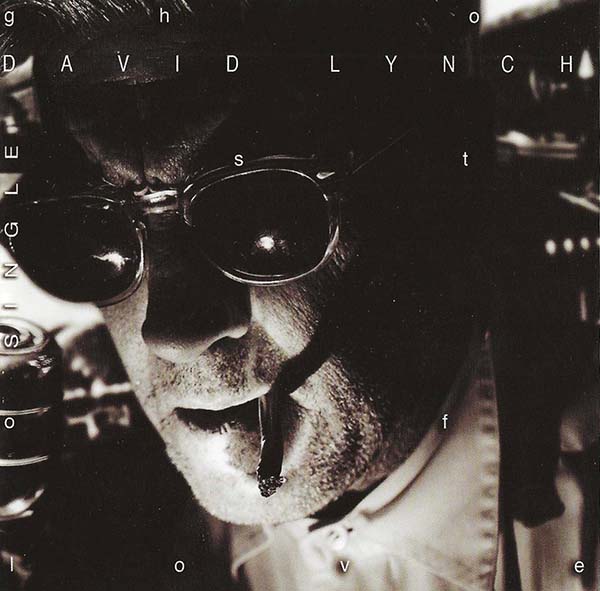
Mike Mettler: Were there any records you heard in your youth where you thought, “Hey, this is the kind of sound that I’m on the same wavelength with”? And was there something you heard growing up that you’d say influenced you as a musician?
David Lynch: Oh, yes! You hear a song, and you say, “What is it? Is it the sound of the guitar that drives you crazy?” And sometimes the sound of the drums can make you sick! It’s all kind of a personal thing.
Mettler: Do you recall the first record you actually bought?
Lynch: I’m pretty sure it was “Wake Up Little Suzie,” by The Everly Brothers [released in September 1957 as a 45 on Cadence]. I think I got “Peggy Sue” by Buddy Holly, too [a two-sided 1957 single with “Everyday” on the flip, on Coral] . And I’m sure I got some Elvis.
Mettler: You can trace a good bit of sonic lineage from that material throughout your own work. On almost every track of Crazy Clown Time, you start out with drums first before the guitar and vocals come in. It kinda sets the table for me, and I think of it as your own distinctive Wall of Sound.
Lynch: Personally, I love a certain kind of snare sound, and a certain hi-hat. I love tight closing of the hi-hat. This thing thrills me! I cannot tell you how beautiful that sound is.
Mettler: Did you ever expect to become a guitar hero? There are a lot of great textures and tone selections on here.
Lynch: That’s just fantastic to hear, Mike. Bless your heart.
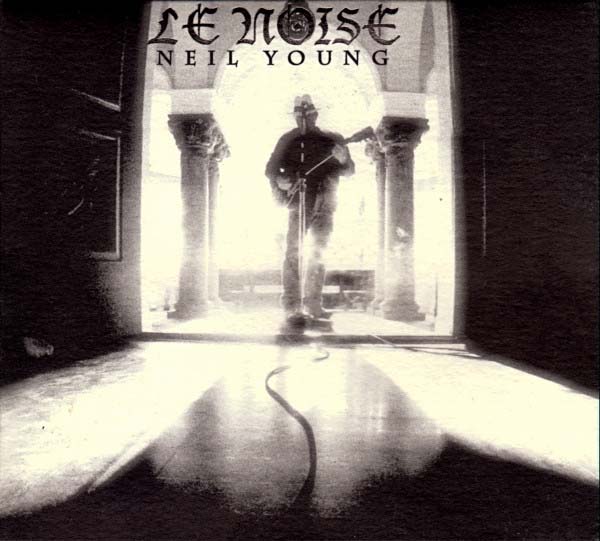
Mettler: I see a lot of parallels between you and Neil Young as players.
Lynch: Oh my God, no no no! But thank you. I’m absolutely crazy about his album Le Noise [released on vinyl in September 2010, as Reprise 525956-1]. It’s just phenomenal. I think that’s one of the best I’ve heard. It’s a beautiful, powerful sound he’s got there — just incredible. Have you heard it?
Mettler: I have. To me, it’s a modernized version of his “Sample and Hold” phase [from January 1983’s Trans, on Geffen] — which, in all honesty, mirrors the Clown record to me. I see a lot of parallels between the chances and choices he makes, and what you’ve done here. You’re setting a tone, and a lot of the effects you have on your voice put me in the mind of that type of artist who says, “I have a vision, I’m going to present it, and I’m strong enough in getting behind it that it sells itself.” Did you have that kind of focus while making it?
Lynch: This is music made over several years, so it was really one thing at a time. The only glue from the beginning was, at least as a point of departure, a blues feel, so that’s maybe what unites all these songs — even though some of them have drifted further away from that.
Mettler: We get 14 songs here. Did you have any leftover material?
Lynch: Yeah, yeah, yeah. We have more material. For Japan, they asked us to put another song on the album [“I Have a Radio”], and a couple other things. And we’re working on new stuff at least every other day, so it keeps going.
Mettler: So you could conceivably release new music on a regular basis?
Lynch: I don’t think we’re ever going to be able to do an album a month. I don’t think so, Mike. (both laugh)
Mettler: Well, even Neil and Prince don’t do that either. (both laugh again) If, say, you find you have one song that you finish and you want to release it on its own, how would you go about doing that? Would you put out a 45, or do it digitally?
Lynch: If you think you’re headed toward another album, you might save it. But if you think it’s something that’s really different or something you love and it won’t make it to an album, then you might do that. [MM notes: As an actualized example of that concept, “Ghost of Love” and “Imaginary Girl,” originally self-released together by Lynch as a CD single in 2007, were reissued on a 45 in April 2022 (Sacred Bones SBR-291).]
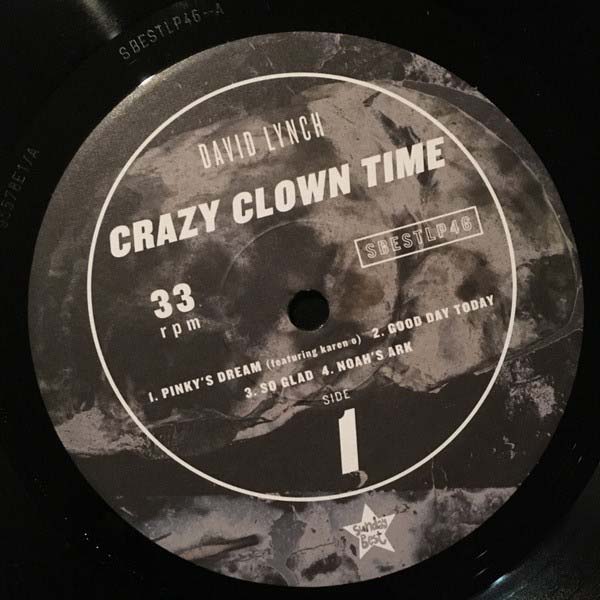
Mettler: As a director, sequencing a film is obviously important to how you set scenes. When you put these 14 songs in this particular order, you must have been very meticulous in deciding that “Pinky’s Dream” has to be first on Side 1, and “I Know” went where it went, sixth, on Side 2. [It’s listed as Track 6 overall, but it’s just the second track on Side 2.] Is that a conscious process?
Lynch: Yeah, but it happened really fast. Sunday Best [the label] gave me and Big Dean Hurley [his engineer and co-conspirator] a list of how they saw it going together. And just thinking about it and playing it through where you move this one here and that one there, you know, that’s it. It feels correct. There’s not necessarily a logical reason for it; it just feels correct. As they say, there’s objective science, and there’s subjective science.
Mettler: As a listener, I feel I should at least once respect the order that you, the artist, have chosen to present.
Lynch: I was just telling somebody that I don’t know if anybody listens to the whole thing anymore. Then I added, “Well, maybe once.” It would be beautiful to see a flow that would work if you do listen that way.
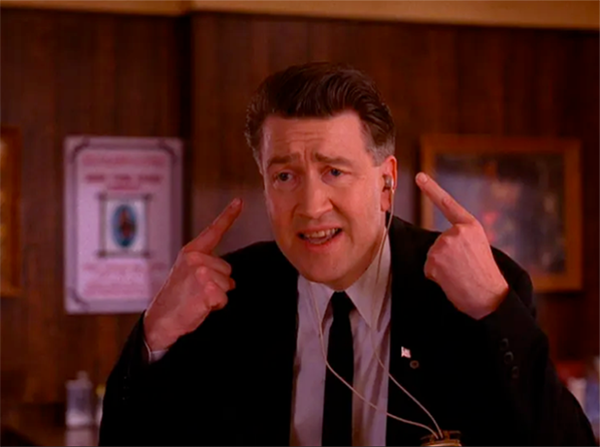
Mettler: I know your time is short, but I have one last and very important thing I want to ask you. What would Gordon Cole [Lynch’s recurring guest role on Twin Peaks as a hard-of-hearing FBI Regional Bureau Chief] have to say about listening to Crazy Clown Time?
Lynch: Well, Gordon Cole, he’d have to sit real close to the speakers. (laughs) And Gordon Cole would say (shouts), “Play it full, or not at all!”
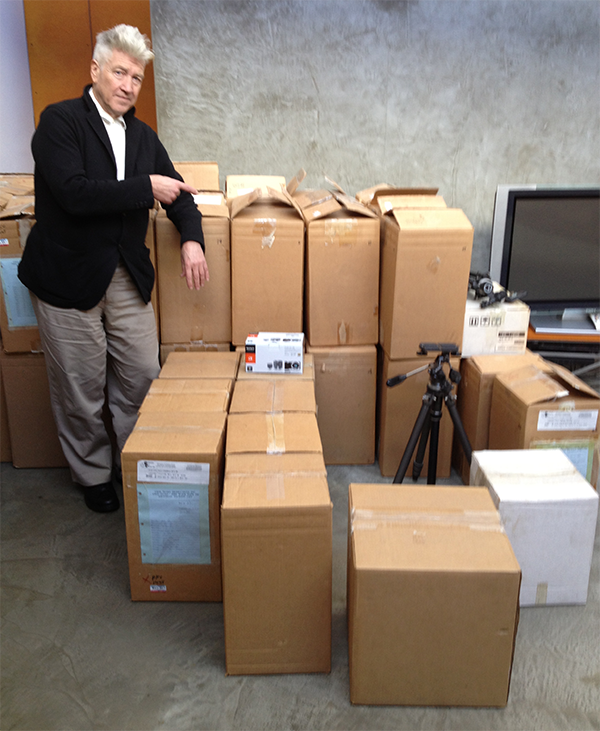

What a gem of an article and a person. Kudos and God bless David Lynch.
After listening to his NPR interview a few months back, I am going to attempt to dig into TM more and get in deeper in touch with the inside.